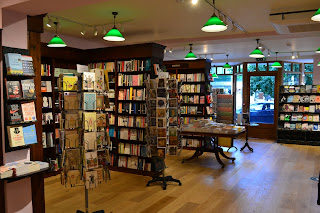Charles the first and the English civil war in Oxford
Charles the first and the English civil war in Oxford
It is generally known that King of England Charles I was extravagant, a patron of the Arts and that he had his head removed. Less is known about his last years in Oxford. His soldiers, supporters and for a short period his French wife Henrietta Maria retreated to the city before losing the war with Parliament. He held court at Christchurch College, borrowed silver from colleges to mint his own coinage and summoned Parliament to Christchurch’s dining hall.
Charles I succeeded to the throne in 1625. In the same year he married French Princess, Henriette Maria. Anticipating expensive tastes and concerned that his bride might persuade him to fund French wars Parliament took the precaution of withholding from Charles permission to collect for himself customs duties and other taxes. Believing in the divine right of kings Charles collected the taxes illegally.
In 1629, annoyed by its complaints, Charles dismissed Parliament. Rumours spread and tensions grew. The ‘Liberty of conscience’ hard won by protestants in the reign of James 1st was again threatened. Prominent reformers who spoke out against the suppression of the new faiths by the Anglican church were punished by having their ears cut off. Other eminent Protestants were brutally silenced for inferring that Catholic conversions were rife in court society. Anglican churchmen, famously William Laud Archbishop of Canterbury and President of St John’s College, were given ever greater powers. It was believed that Charles’ French and Catholic consort persistently counselled him not to compromise with mere mortals.
In the early days of his reign Charles collaborated with William Laud on extravagant architectural embellishments of Oxford’s finest buildings. Particularly well preserved is the Canterbury Quad of St John’s College, which is graced by statues of Charles and Henrietta Maria. The Northern portico of the University Church of St Mary’s was donated by Charles. It is a cacophony of nubile cherubs and ‘Popish attributes’.
1n 1640, eleven years after it was dismissed, Charles, with some cheek re-summoned Parliament to raise money for his war with Scotland. Parliament negotiated obligations to Parliament upon the Crown but Charles insisted on the divine right of kings. The King was only answerable to God. England could be protestant, but not throw the baby out with the bath water and preserve the dignity and majesty of the divine right of its royal leader. Couldn't it? Exasperated, Parliamentarians like Oliver Cromwell became entrenched in a conviction that the Reformation had not gone far enough.
An uprising in Ireland, and a dispute over whose army should supress it led to further strains. After an attempt by Charles to arrest 5 Parliamentarians, in August 1642, war broke out between Royalist 'Cavaliers' and Parliament's 'Round Heads'.
Charles retreated first to Hampton court and then to Oxford. It must have been odd for him to be in Oxford without his good friend William who had been arrested in 1640 and sent to the Tower of London.
In Oxford Charles took up residence at Christchurch College. In 1644 and 1645 Parliament was summoned not to Westminster but to Christchurch’s great dining hall. Following an understandably unpopular trip to The Hague to pawn the crown jewels, Henrietta Maria briefly joined Charles in Oxford in 1643. She occupied Merton College along with her retinue of courtiers, dwarves and exotic animals.
While life in the colleges was sumptuous and refined, in the city with soldiers and Royal supporters doubled the population. Overcrowding brought fire, plague and typhus. Henrietta Maria left within a year taking her menagerie to Bath before returning to France and her Bourbon family.
In 1645 William Laud was found guilty of trying to overthrow the protestant religions and was executed. His body was later returned to the Chapel of St John’s College. Parliament professionalised its army calling it ‘The New Model Army’.
Cromwell, a brilliant soldier, won a series of decisive battles and in June 1646, Royalist Oxford surrendered to General Fairfax following the third Parliamentarian siege. Charles had already trimmed his long hair, put on a false beard and, disguised as a servant had rather ingloriously already fled north across Magdalen Bridge to surrender himself to the Scots.
Charles continued to try to escape and to break his word. In 1647 The Scots turned Charles over to parliament. Charles was sentenced to death as ‘a tyrant, traitor, murderer and public enemy’. On 30 January 1649, he went to his beheading at Whitehall. His martyrdom later played an important role in the ‘Oxford Movement’.
Parliamentarian forces occupied Oxford. They pillaged the lead from the roofs to make ammunition for their muskets, as Charles had plundered the college silver to mint his coins. It is perhaps not a coincidence that Oliver Cromwell was a Cambridge man. At New college fortifications that date back to the days of the 17th century's civil wars are built into the college garden’s North Wall.
In the Ashmolean Museum you can find an example of the silver coin minted by Charles depicting him, Charles 1st on his horse, with a reminder to the reader that a king can be both protestant and divine.
In 1653 Cromwell dissolved Parliament. His was a tyranny that ended the episcopal suppression of the new religions and allowed Jewish people back in to English society. The objective was to outnumber Catholics.
Above the Bodleian’s statue of King James I presenting his works to Fame and the University, stands justice with her balance, sword and blindfold. She allegorically reminds Kings that Law is above the king. A lovely story tells that while in Oxford Charles went to borrow a book from the Bod’s book collection. He was told that he could not. The King exclaimed but I am the king, to which the dignified member of the library replied ‘and this, your Majesty, is not a lending library’.
Sophie Duncan
December 2019

Comments
Post a Comment